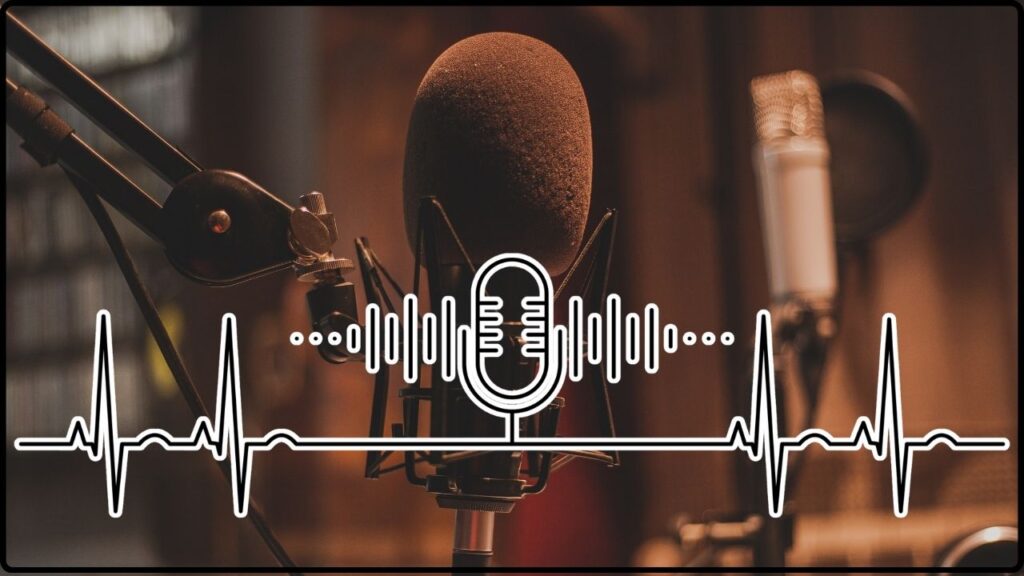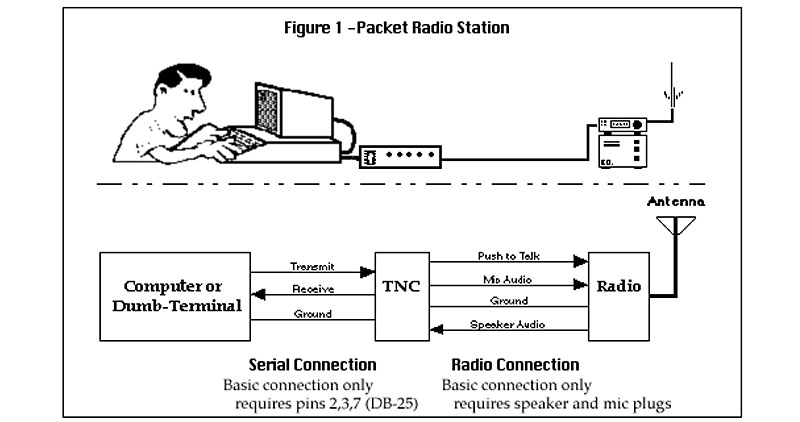
What Was Packet Radio: Packet radio was the first digital mode for amateur radio operators—machinists of the airwaves better known as “hams”—to send and receive data wirelessly over radio waves. This pioneering technology brought the concept of Internet-style networking to ham radios, long before cell phones or Wi-Fi became household names. This article dives deep into what packet radio is, how it evolved, and why it still holds relevance, delivering detailed info that’s clear and approachable for beginners while insightful for industry pros. Whether you’re a ten-year-old tech enthusiast or a seasoned radio operator, you’ll find something valuable here.
What Was Packet Radio?
Packet radio is where wireless digital communication began for amateur radio operators, predating the wireless internet we rely on today. From Norman Abramson’s ALOHAnet experiments to modern APRS tracking systems, packet radio blends old-school radio wizardry with cutting-edge networking. It offers a playground for learning, emergency communication, and global connection that remains as relevant now as it was 50 years ago. Whether you’re a beginner or a pro, packet radio’s legacy and ongoing evolution offer endless opportunities to explore the airwaves.
| Feature | Details (USA-Focused) | Key Stat/Fact | Career Value |
|---|---|---|---|
| Invented (Timeline) | 1960s–1970s development starting with ALOHAnet, PRNET by DARPA | 1971: ALOHAnet, 1973–76 PRNET experiments | Fundamental wireless network skills |
| Protocols Used | AX.25, APRS, TCP/IP | IP over packet radio since early 1980s | Digital comms, emergency radio |
| Transmission Speeds | VHF: 1200 baud; HF: 300 baud; Modern speeds up to 400 kbit/s+ | Early systems ~9,600 baud for research networks | RF engineering, modem design |
| Historical Impact | Inspired Wi-Fi, Ethernet, and Internet protocols | Packet radio connected to ARPANET, PRNET, SATNET | Pioneering networking tech |
| Official Resources | Wikipedia: Packet radio | Key research led by Norman Abramson | Tech evolution context |
What Was Packet Radio?
At its core, packet radio is a way to send digital information by breaking it up into “packets” and transmitting those packets over radio waves, not wires. Unlike traditional voice communication or Morse code, packet radio turns computer data into audio tones, letting hams send messages, telemetry, or small data bursts over VHF, UHF, or HF bands.
Each packet carries important details like the sender’s and receiver’s radio call signs, error-checking bits, and control info—imagine sending little envelopes, each with a return address and a destination to ensure it arrives safely and correctly.
The Beginnings: Pioneering Networks and Groundbreaking Research
ALOHAnet and PRNET: The Start of Wireless Packet Networking
Packet radio’s foundations started in the early 1970s with the University of Hawaiʻi’s ALOHAnet, led by Prof. Norman Abramson. They tackled a big problem: how to get multiple radios talking on the same channel without stepping on each other’s transmissions. Their elegant solution, the ALOHA protocol, simply said “transmit whenever you want but listen for collisions and resend if needed.” This random access approach was simple yet revolutionary and laid the groundwork for future wireless networks.
From 1973 to 1976, DARPA (Defense Advanced Research Projects Agency) ran the PRNET project around San Francisco, using direct sequence spread spectrum and forward error correction to push data reliably at speeds up to 400 kbit/s between mobile and fixed stations. These experiments successfully demonstrated the first real-world internetworking, linking PRNET, ARPANET (the early internet), and SATNET (a satellite packet network).
Hams Join the Party
By 1978, radio amateurs started tinkering with the tech. Canadian hams like Robert Rouleau and his colleagues pioneered transmitting ASCII-encoded data over VHF bands, building their own gear with authorization from Canadian authorities. By 1980, the U.S. FCC gave amateur operators the green light to use packet radio legally. Soon after, standardized Terminal Node Controllers (TNCs)—modems for radios—became available, sparking rapid growth.
Today’s AMPRNet, dedicated to amateur digital communication, was born with TCP/IP running over packet radio in the early 1980s, nearly a decade ahead of the public internet adopting the same technology.
Technological Breakdown: How Packet Radio Works

Step 1: The Essentials
- Radio: Typically a VHF or UHF transceiver, but HF radios work for longer ranges.
- Terminal Node Controller (TNC): Translates data from computers into audio tones and converts those back into data on reception. It’s like a modem for your radio.
- Computer or Software: Runs packet radio programs that handle message creation, decoding, and network management.
Step 2: Packetizing Data
Messages are chopped into small packets with metadata headers including callsigns, sequence numbers, and error detection bits for reliability.
Step 3: Transmission
The TNC modulates these digital packets into audio tones (e.g., Bell 202 tones at 1200 baud). The radio sends these sounds over the air to other stations.
Step 4: Repeat and Routing
Repeaters called “digipeaters” pick up packets and retransmit them, boosting range and allowing multi-hop networking.
Step 5: Reception and Decoding
Receiving TNCs decompress the audio back into digital packets and pass them to the host computer to reassemble into messages or telemetry data.
Modern Twist
Software-based TNCs, like Direwolf, replace hardware modems, making packet radio more accessible and flexible. APRS (Automatic Packet Reporting System) uses packet radio to transmit GPS locations, weather reports, and short texts, often feeding data seamlessly onto the internet for worldwide tracking.
Why Packet Radio Still Matters Today?
- Emergency Communications
Packet radio shines when cell and internet networks go dark during disasters—earthquakes, hurricanes, wildfires. It lets volunteers send critical data without clogging voice channels or relying on infrastructure. - Education and STEM
Hams and educators use packet radio to teach radio electronics, coding, networking, and troubleshooting—providing a hands-on introduction to real-world communications technology. - Community and Experimentation
Packet BBSs, keyboard-to-keyboard chats, and APRS tracking keep amateur communities vibrant even in remote areas with little internet access. - Technical Career Foundations
Understanding protocols like AX.25 and TCP/IP over RF and working with modems and spectrum management is solid prep for careers in cybersecurity, RF engineering, and public safety communication.

Troubles and Triumphs: Challenges in Packet Radio’s Evolution
Technical Obstacles
- Packet radio had to overcome radio’s broadcast nature, where all nodes hear everything, leading to collisions. The ALOHA protocol’s simplicity solved this by letting transmitters just try again randomly if packets collided—still the basis of modern wireless networking.
- Early gear was bulky and expensive, but organizations like TAPR (Tucson Amateur Packet Radio) helped bring down costs with modular, standardized kits from the 1980s.
Regulatory and Geographic Hurdles
- Early experiments had to navigate FCC restrictions and find experimental frequencies. Norm Abramson’s team worked with the Department of Defense to secure UHF bands for ALOHAnet.
- Geography challenged UHF and VHF packet’s short range, but digipeaters and HF packet modes extended reach globally.
Getting Started With Packet Radio: Practical Tips
- Start small: Use a basic VHF handheld and your laptop with software TNCs like Direwolf.
- Learn the fundamental protocols: AX.25 basics and APRS can be mastered with online tutorials and ham club mentorships.
- Join local ham clubs or online forums to find help and resources.
- Get licensed! Licensing is required to transmit on amateur frequencies legally.
- Experiment with APRS trackers, upload to sites like aprs.fi, and explore real-time radio telemetry.
ARES vs. RACES: What’s the Difference and Which Should You Join?
What is ARES? A Complete Guide to the Amateur Radio Emergency Service










